
Greetings from my beloved Frontier of Wyoming. I am re-entering upon returning from my National Outdoor Leadership School (NOLS) course in Alaska’s remote Brooks Range and Arctic National Wildlife Refuge.
For two weeks, I backpacked a country that is so big and unending and wild and spectacular that there is no way I can adequately communicate or share its magnificence.
A place like Alaska’s Arctic National Refuge and Brooks Range, and an experience like a NOLS course, changes people. I am not the same person.
I have many interesting stories to share. While I am still “unpacking” all that I gained from the experience, here is a list of the main take-aways.
1. A NOLS course is not a guided tour or a vacation. It is hard, but it’s one of the most fulfilling things I’ve ever done. When I sign up for hard things, I grow. This was hard for all kinds of reasons, and as a result, I am more than I was before.

2. Longing. As a mother of three young sons, I found the hardest part of the NOLS course was not having any contact with my family. I now know what it is to “long” for someone. I am better for enduring it, though, and I hope my doing so may inspire other women who are mothers to consider a NOLS course.
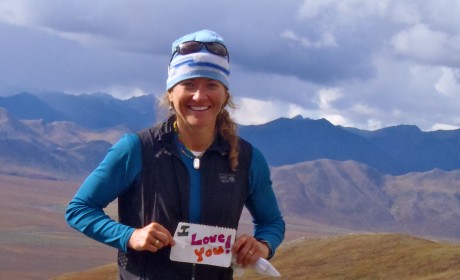
3. Expedition Behavior. This is one of the concepts for which NOLS is famous. On my course — spent with “strangers” and in bear country where bear precaution protocol means you can’t do anything without three other people near you at all times — learning to pitch in and do whatever it takes to move the group forward was critical and one of the most valuable skills learned. I see significant value in applying EB in all areas of my life.
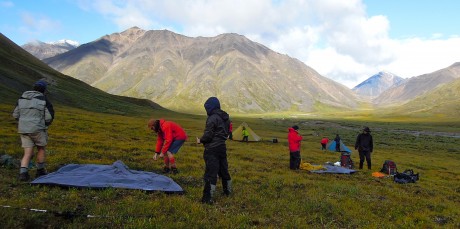
4. Route-finding. We did lots of macro- and micro- route finding in the Brooks Range, a region that has no roads or trails. Map reading and route finding were a major part of my course. If we didn’t do it well, it was costly. Nothing like climbing the wrong pass or ascending or descending the wrong drainage only to realize you should have spent more time thinking it through and studying the maps, right? (Chris said it best when he said, during a particularly lengthy map check: “I don’t think it’s a waste of time for us to figure out where we are.”) Like in life, we can charge ahead with our heads down, choosing a route without looking ahead or considering the big picture. We can choose a path in life without being decisive, and just sort of wander and hope we end up at a good place. Or, we can look at the big picture — the features of the landscape before us for as far as the eye can see — and then choose micro routes based on factors such as rewards, risks, time investment, certainty, consequences and other factors or features. This was one of my favorite aspects of the course, particularly how it applies to my life, since I am choosing to not follow a trail.
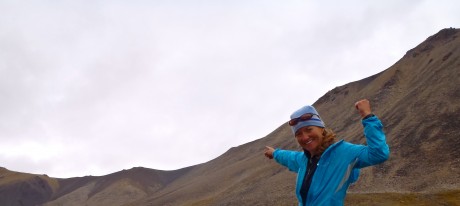
5. “Leader of the Day.” Our group of 10 divided into hiking groups of five each day. Each group was led by a “leader of the day.” I volunteered for this early on in the experience. While our hike was considered a success and I received positive feedback during the debrief, the day wasn’t easy for me. Despite the “success,” and my hankering for leading, I felt ineffective on a couple of fronts. It was humbling. I had many learnings during that day, which are already serving me in my life. The LOD component of a NOLS course is invaluable, and I plan on getting vulnerable in sharing my LOD experience with you in an upcoming post.
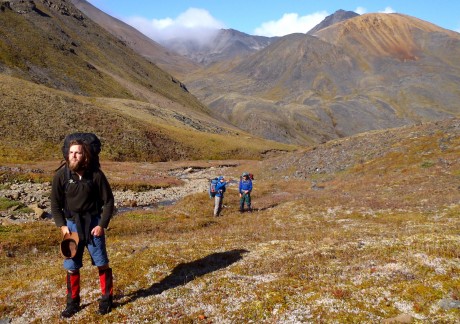
6. Active Followership. This is another of NOLS’ well known leadership skills. Because I prefer to lead — I favor ownership and responsibility — I looked forward to learning about “active followership.” Turns out that I’m often an active follower due to my non-directive style of leadership. But mostly, this skill is an intriguing one, and I will be posting about it.
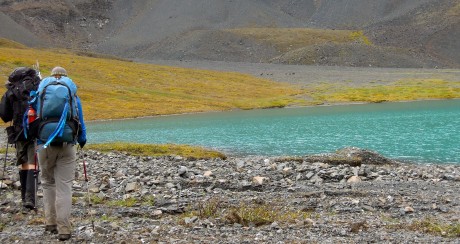
7. Bear Precaution Protocol. Wow. This is a good story to tell! Alaska is bear country. A lot of leadership skill development simply happened as a result of being required to always have three people with you to do anything, which, most notably, included going to the bathroom, but also for simple tasks like retrieving a camera from a tent or needing to communicate something to a member in another group that was in the tents when you were at the kitchen or the other way around. This aspect of our course also provided some humorous material, some of which I’ll be happy and excited to share in a story on this blog in the future.
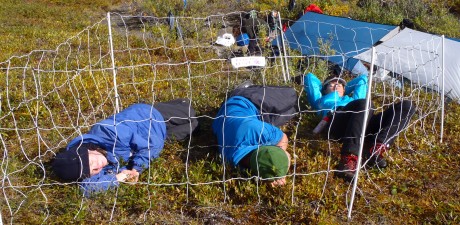
8. Baking and Cooking in the Brooks Range of Alaska. I never imagined I’d leave my NOLS Brooks Range Backpacking course with cake mix and flour on my outerwear, but that’s what happened. NOLS courses follow a “pantry-style” food rations system. We don’t bring freeze-dried foods or s’mores. We had bags of flour, brown sugar, cornmeal, powdered milk, pancake and cake mix, quinoa, pasta, cous-cous, cereal, granola and a pretty generous spice kit. Meal time was a big deal, then. Not only were we hungry and motivated to “lighten our loads” by consuming the food we were packing, but pantry-style cooking involved measuring and combining — and being creative. This often meant breakfast and dinner, from set up to clean up, each took about two hours. The cooking and baking and creating with our course-mates was an unexpected pleasure of the course that facilitated not only meal preparation but intimate bonding and time for great conversation with one another.
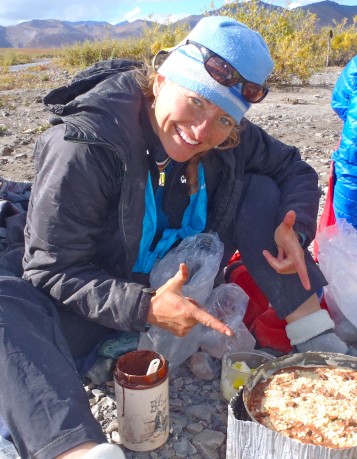
9. 24 Hours of Daylight. Well, more or less, it never got dark. At home in Lander, WY, I’m a morning person. I rise at 5 am and am in bed by 10 pm. On my NOLS course in Alaska, we would wake up between 7:30-9 am and often eat dinner as late as 8-10 pm. Often we didn’t get to our tents for bed until midnight. If we had nightfall I am not sure I could have adjusted. Certainly it would have been interesting to see me try and operate on such a schedule! But given it was light all the time, it was nothing to adjust. I found it wonderful to have so much light and yet it was so perplexing when I would be visiting with one of my course-mates in broad day light, and it was midnight! I did not sleep well, despite being tired and comfortable and for the most part, warm. It may have been due to the daylight, although I doubt it since I often had my head buried in my sleeping bag. When I returned to civilization, I saw author Tim Sanders quote someone saying “I haven’t slept for 12 days. Because that would be too much.” Oh how I can relate. That is my story for the Brooks Range. Fortunately I did get lots of rest when others were sleeping. And as someone once told me, I can sleep when I’m dead. I was in Alaska’s Brooks Range after all!
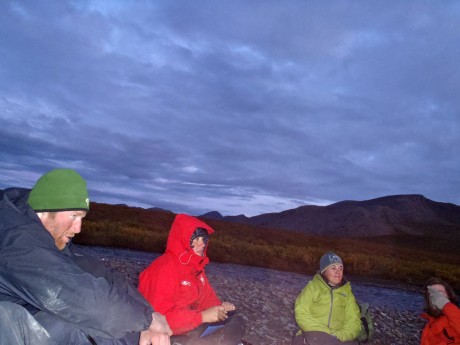
10. Rainbows. We saw several rainbows during our backpacking. Each was magnificent. My favorite was one that lit up its end (a bunch of orange lichen-covered rock on top of a pass we had just ascended) and another on our second-to-last day of hiking that filled the bowl of a black granite peak. Often we were above the rainbow, which provided a pretty cool vantage.
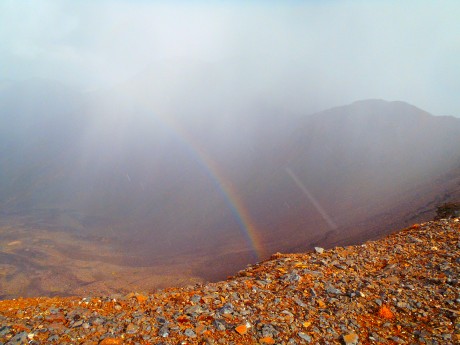
11. Variable weather. The weather for our two weeks was phenomenal for backpacking. That said, we experienced all four seasons on our course. Probably we had more spring and fall than winter and summer. Most days, at least for some short duration, we would have on our full rain gear, but not too frequently. On one day, we ascended a mountain pass in falling snow. On our two layover days of the trip there was enough sun to get more freckles on my face and even get de-layered down to a short-sleeved shirt and shorts. Mostly it felt like Autumn though. Much of the tundra’s floor was “crispy and crunchy” and there were lots of golds and burnt-red leaves. I like to be in control. The weather is something I can’t control. For this reason I am fascinated by it and welcome its variety. I also like the way the weather, depending on its mood, changes the feel of the moment as well as the look of the landscape. The variable weather did all of this for us in the Brooks Range.

12. Physical challenge. I am in good physical condition. My passion is long distance day hiking and I live at an elevation of 5,280′ and hike at altitudes ranging from 8,000′-12,000′. I didn’t expect my NOLS course to be much of a physical challenge for me. Still, it was physically demanding. There were two days that involved ascending mountain passes in rain and/or snow that had steep angles and loose rock on rock, followed by a long, unrelenting descent in a rocky gorge. These days, combined with the usual work of the course (setting up and breaking down camp, packing, and other chores) were challenging. Overall the course was a good physical challenge. Certainly this is a huge benefit of a NOLS course — using the outdoors and an awe-inspiring natural setting as a platform to improve your work ethic and your health. 🙂

13. Leave No Trace. I know we didn’t! Learning and applying the Leave No Trace principles in a place as undiscovered and vast and wild as Alaska’s Brooks Range and Arctic National Wildlife Refuge was a critical component of the NOLS course. I have much to share about LNT and examples of our implementation of LNT, including one of our biggest fails — and the low point of the entire course for me — when a Dig-It went missing. Long story short, we found it. But the stakes are high with LNT. We don’t mess around. NOLS taught us/me well when it comes to LNT.
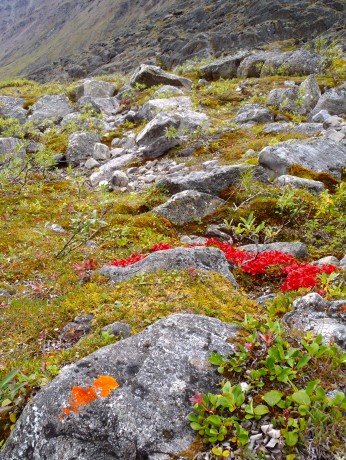
14. The People. As I waited to meet my course-mates, I wondered, nervously, “What kind of person would sign up for a NOLS Brooks Range Backpacking course?” I was eager to meet these new people but also nervous. Turns out that I have some new friends in my life that I view more as family than friends. I will never forget any of them and hope we can keep in touch forever. To share such a meaningful, unique, hard experience together in a magical setting, is really something to treasure. Our instructors, too, were off the charts and also a part of this new family. I didn’t enroll in the NOLS course for the people I would meet. But it turns out the people on this course enriched the experience in ways I could never have imagined.
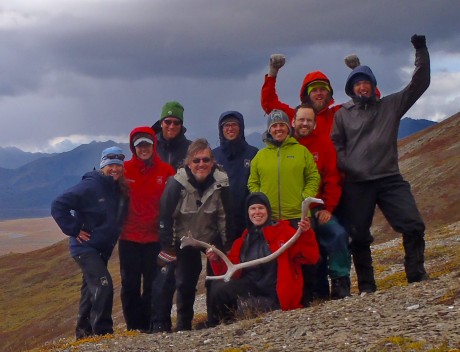
15. Evening Meetings. Every evening, as part of the NOLS experience, we had evening meetings. These provided a time for announcements to be made, tips & tricks to be shared, and discussion around the next day’s schedule. Then, one of us would have a 15-minute “spotlight,” which was a time to share your life story. There was also usually a poetry reading or a sharing of a chapter or small essay. Sometimes one of us would read something interesting in a naturalist’s book about something we saw during the day. The evening meeting was an intimate time for our group and it was really a great way to end each day.

16. Classes. A NOLS course is not a guided tour or vacation. There is a lot of instruction provided in outdoor skills, wilderness travel, environmental ethics and leadership. There were often classes held in the morning before we hit the trail, or in the evenings, and on our two layover days. Some classes were optional. There were classes on leadership styles and skills, knot-tying, cooking, stove-repair, map reading/gps use, first aid, and others. One class was “Alaska: Sense of Place.” This was presented to us during a layover day with the Chandalar River in the background. It made the experience complete because we were able to better understand the place we were in and how it came to be.
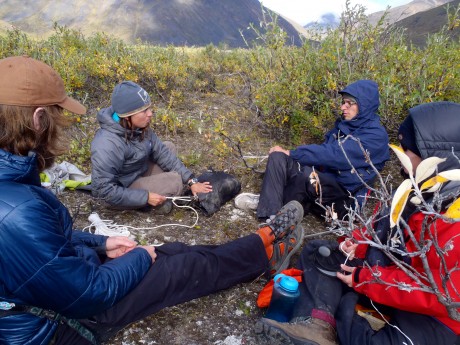
17. Unforgettable Moments. The moments of this trip that are unforgettable include “swimming” in the Brooks Range, skipping rocks in the Chandalar River, watching four little waterfowl take off from Caribbean blue waters of Lake #4352 as hundreds of caribou ran across a hillside in the background, standing on a pass and being above a rainbow to the left and in falling snow with sunshine piercing through on the right, “sledding” down a bunch of shale/scree, playing gin rummy under the fly in a downpour, the smell of Labrador tea while hiking in the tundra, the taste of wild blueberries, the almost-constant sound of running water from a nearby river or a babbling brook, watching the clouds move down a ridge and “fill in” the fronts of a peak we could see from our tents, chocolate chip, brown sugar and granola pancakes with peanut butter on top, listening to poetry with kindred spirits in a magical place, posing with antlers against my head, coffee in the morning, looking at scat full of berries and small bones and trying to figure out the story, baking my first backcountry cake, the unique and fabulous signature “bear calls” each of us had, hearing rain pitter-patter on our tent all night long, the first time I set up and operated the camp stove with no assistance, the vanilla sky on our last night in the Chandalar River, walking up and through a small-but-dramatic gorge, the “moment of silence” upon ascending our final pass of the trip — a point that symbolized our “going home,” hiking under the moon and a handful of stars during our 2 am “hike to the highway,” our tailgate coffee party on the road at the end of the trail/course, and the really deep conversations I shared with each of my course-mates at various points of the course. And there are so many more.
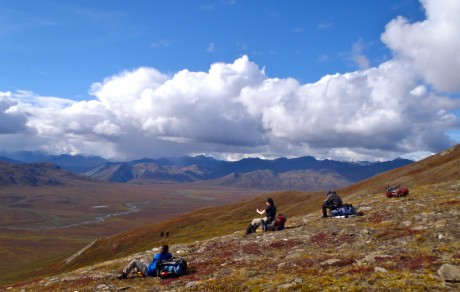
18. I’m A NOLS Graduate! I was raised here in Lander, WY, where NOLS is headquartered. One of my only regrets was that I never took a NOLS course. (We plan to send each of our three sons on a NOLS course when they’re 16.) I love what NOLS stands for and am a cheerleader of NOLS. In my work and travels, I’ve often met people who are NOLS graduates. They always are leaders in their fields, which I think is no accident. During the last year, I’ve been going through a bit of a “reinvention”, and many folks I know who work at NOLS (Jeanne O’Brien, Bruce Palmer, Kat Smithhammer, John Kanengieter, Brian Fabel, Rick Rochelle, and others) told me, “it’s never too late.” My NOLS experience was everything I had hoped it would be, and more. Truly. I had high expectations for the course and they were exceeded. I am fulfilled to be among the graduates and in this “club.”
19. Jaw-Dropping, Inspiring Scenery. I will be inspired for the rest of my life by the sights I saw and experienced in Alaska’s Brooks Range. I feel honored and privileged to have been a guest.
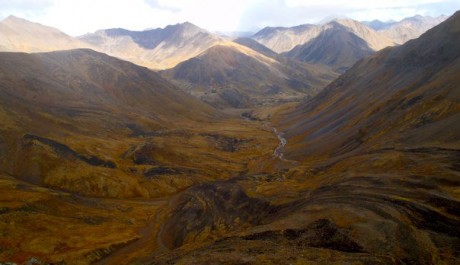
20. NOLS Leadership Curriculum. NOLS is famous for its leadership model that utilizes the outdoors as its classroom. A big motivation for my embarking on a NOLS course was to learn and experience the school’s leadership curriculum. I was not disappointed! I learned about NOLS’ 4 Leadership Roles (designated leadership, peer leadership, active followership and self-leadership) and its 7 Leadership Styles (expedition behavior, competence, communication, judgment and decision-making, tolerance for adversity and uncertainty, self-awareness and vision and action). It’s funny; I got my money’s worth from the leadership classes and curriculum, but I also reaped a lot of leadership development benefit that just happened due to the fact I was dropped by the side of the road in the Far North to backpack for two weeks with “strangers,” having to follow strict bear precaution measures, cook and bake together, struggle together, etc. For this reason, NOLS’ is truly a brilliant model.

21. Personal Video Interviews with my course-mates. Meet the interesting friends I made on my NOLS course and hear from each of them what they gained from the experience. For starters, here is mine:
MUCH MORE to come here in the next days and week.
Part 2: My Brooks Range People Made Me Better
Part 3: Epic Adventure — And Longing
If you’d like to see videos or photos, help yourself here: